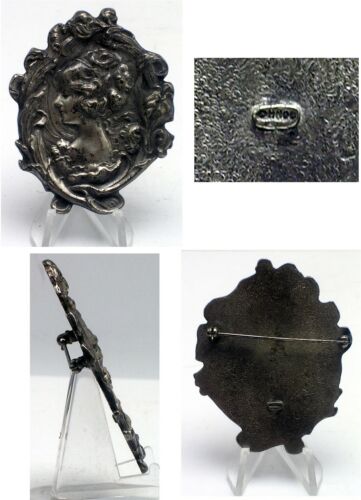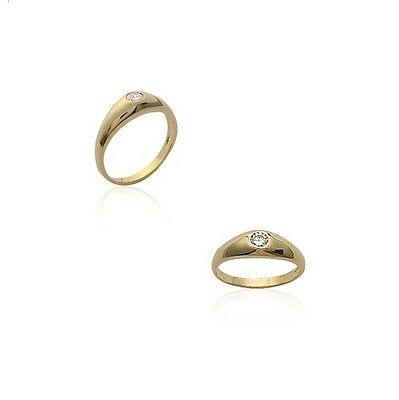-40%
HISTORIC NEW ORLEANS COLLECTION Old Issue VICTORIAN ART NOUVEAU LADY BROOCH PIN
$ 21.12
- Description
- Size Guide
Description
HISTORIC NEW ORLEANS COLLECTION Old Issue VICTORIAN ART NOUVEAU LADY BROOCH PIN///////////////////////////////////////////////////////////\\\\\\\\\\\\\\\\\\\\\\\\\\\\\
THIS MONTH, WE ARE PLEASED TO OFFER MANY FINE ANTIQUE AND COLLECTIBLE ARTIFACTS AND RARITIES FROM MISSISSIPPI AND LOUISIANA ESTATES AND PRIVATE COLLECTIONS
PLEASE
CHECK
OUR
OTHER
EBAY
LISTINGS
FOR
MORE
EXAMPLES
OF
EARLY
ANTIQUES
&
COLLECTIBLES
///////////////////////////////////////////////////////////\\\\\\\\\\\\\\\\\\\\\\\\\\\\\
DESCRIPTION
FROM AN OLD AND PROMINENT NEW ORLEANS, LOUISIANA ESTATE COLLECTION, A STRIKING LADIES BROOCH PIN, MEASURING A LARGE 2 x 2.5" OVERALL, WEIGHING A SUBSTANTIAL -1- OUNCE.
SOLID CAST IN RELIEF TO THE OBVERSE, FEATURING ART NOUVEAU MANNER ELEMENTS DEPICTING A STYLISH VICTORIAN LADY AT CENTER, SURROUNDED BY WREATHS AND SCROLLS, EXHIBITING AN "ANTIQUED" FINISH EXHIBITING A SILVER PETWER PATINA.
TO THE REVERSE, A DIMINUTIVE HALLMARK READS
c HNOC
, RELATIVE TO THE HISTORIC NEW ORLEANS COLLECTION.
FITTED WITH A STANDARD PIN AND SAFETY CATCH CLASP.
CONDITION REPORT
> AS ACQUIRED, NOT CLEANED OR POLISHED ~ PRODUCED IN A MANNER TO REPRESENT A TRUE ANTIQUE, EXHIBITING TYPICAL AND MINOR COSMETIC ELEMENTS RELATIVE TO AGE, HANDLING AND MATERIAL ~ OVERALL GOOD, VINTAGE CONDITION, BEST NOTED BY EXAMINING THE IMAGES OFFERED.
ABOUT the HISTORIC NEW ORLEANS COLLECTION
The Historic New Orleans Collection (THNOC) is a museum, research center, and publisher dedicated to preserving the history and culture of New Orleans and the Gulf South.
Founded in 1966 through the estates of General L. Kemper Williams and Mrs. Leila Moore Williams, THNOC has helped local residents and visiting tourists better understand the multicultural history of the region through thought-provoking exhibitions; original books, periodicals, and articles; and its public research center. In addition, it offers a robust programming schedule and an extensive array of educational resources for teachers and students of all levels.
THNOC operates three campuses in the heart of the French Quarter. In observance of our founders' request to make historical resources available to all, admission is free.
As a publisher, THNOC produces award-winning original books exploring the history, art, music, culture, and decorative arts of the region. Our magazine, the Historic New Orleans Collection Quarterly, surveys the region's history as it relates to THNOC's projects and programs.
HISTORY and INFLUENCES of ART NOUVEAU STYLE
Art Nouveau is an international movement and style of art, architecture and applied art-especially the decorative arts-that peaked in popularity at the turn of the 20th century (1890-1905). The name 'Art nouveau' is French for 'new art', it is also known as Jugendstil, German for 'youth style', named after the magazine Jugend, which promoted it, and in Italy, Stile Liberty from the department store in London, Liberty & Co., which popularized the style. A reaction to academic art of the 19th century, it is characterized by organic, especially floral and other plant-inspired motifs, as well as highly-stylized, flowing curvilinear forms. Art Nouveau is an approach to design according to which artists should work on everything from architecture to furniture, making art part of everyday life.
Art Nouveau's fifteen-year peak was most strongly felt throughout Europe-from Glasgow to Moscow to Spain-but its influence was global. Hence, it is known in various guises with frequent localized tendencies. In France, Hector Guimard's metro entrances shaped the landscape of Paris and Emile Gallwas at the center of the school of thought in Nancy. Victor Horta had a decisive impact on architecture in Belgium.
Magazines like Jugend helped spread the style in Germany, especially as a graphic art form, while the Vienna Secessionists influenced art and architecture throughout Austria-Hungary. Art Nouveau was also a movement of distinct individuals such as Gustav Klimt, Charles Rennie Mackintosh, Alfons Mucha, RenLalique, Antoni Gaudand Louis Comfort Tiffany, each of whom interpreted it in their own individual manner.
Although Art Nouveau fell out of favor with the arrival of 20th-century modernist styles, it is seen today as an important bridge between the historicism of Neoclassicism and modernism. Furthermore, Art Nouveau monuments are now recognized by UNESCO on their World Heritage List as significant contributions to cultural heritage. The historic center of Riga, Latvia, with "the finest collection of art nouveau buildings in Europe", was inscribed on the list in 1997 in part because of the "quality and the quantity of its Art Nouveau/Jugendstil architecture", and four Brussels town houses by Victor Horta were included in 2000 as "works of human creative genius" that are "outstanding examples of Art Nouveau architecture brilliantly illustrating the transition from the 19th to the 20th century in art, thought, and society." It later influenced psychedelic art that flourished in the 1960s and 1970s.
As an art movement it has affinities with the Pre-Raphaelites and the Symbolism movement, and artists like Aubrey Beardsley, Alphonse Mucha, Edward Burne-Jones, Gustav Klimt, and Jan Toorop could be classed in more than one of these styles. Unlike Symbolist painting, however, Art Nouveau has a distinctive visual look; and, unlike the artisan-oriented Arts and Crafts Movement, Art Nouveau artists quickly used new materials, machined surfaces, and abstraction in the service of pure design. Art Nouveau did not negate the machine as the Arts and Crafts Movement did, but used it to its advantage. For sculpture, the principle materials employed were glass and wrought iron, leading to sculptural qualities even in architecture. It made use of many technological innovations of the late 19th century, especially the broad use of exposed iron and large, irregularly shaped pieces of glass in architecture. By the start of the First World War, however, the highly stylized nature of Art Nouveau design-which itself was expensive to produce-began to be dropped in favor of more streamlined, rectilinear modernism that was cheaper and thought to be more faithful to the rough, plain, industrial aesthetic that became Art Deco.
///////////////////////////////////////////////////////////\\\\\\\\\\\\\\\\\\\\\\\\\\\\\
PLEASE USE THE EBAY "
CONTACT SELLER
" FUNCTION TO CONTACT US AND RESOLVE ANY QUESTIONS BEFORE BIDDING
FREE SHIPPING ON THIS ITEM TO DOMESTIC ADDRESSES ONLY
INTERNATIONAL SHIPPING AVAILABLE FOR SOME ITEMS ~ CONTACT US FOR A RATE QUOTE BEFORE BIDDING
<<<<<
WE NEVER CHARGE A HANDLING FEE & ALWAYS OFFER COMBINED SHIPPING
>>>>>













